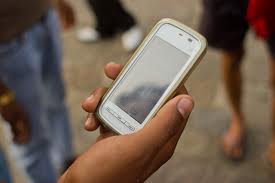The use of mobile phones among students of medical staff
Keywords:
mobile phone, students, useAbstract
The purpose of our investigation was to access the level of mobile phone use by students and their daily expository of magnetic and electromagnetic fields (EMF). Material and method. The investigation was done on population of 205 students of the University "St. Clement of Ohrid", High Medical School - Bitola at age 20-25 years. The gender was: female 67% and male 33%. By our population differences of percentage by sex is not significant because the most of students for medical staff are female (nurse, midways). The students are fooling questioner by voluntary activity. Results. 30.5% of students have mobile phone more than 8 years. And 55% are in daily expository of one mobile phone. The most of them (84%) use it 1-2 hours on a day. The most of them (65%) are expository of mobile phone radiation because they carry it in clothes. The most of them (92%) sleep near phone, with turn on 90.3%, they have no health problems (74%, 83%) and 79% of them now about side effects of use mobile phone. Conclusion. It can be concluded adjacent and excessive use of mobile phones among students in healthcare professions. Therefore it is indispensably students to be educated to a higher level of the harmful effects of using mobile phones with such intensity and adjacent to the central nervous system.References
Abdel-Rassoul, G., et al., 2007. Neurobehavioral effects among inhabitants around mobile phone base station. Neurotoxicology., 28 (2), 434-40. Epub August 1, 2006.
Baan, R., Grosse, Y., Secretan-Lauby, E.l ., Ghissassi, F.B., Bouvard, V., Benbrahim-Tallaa, L., et al., 2011. On behalf of the WHO International Agency for Research on Cancer Monograph Working Group. Carcinogenicity of radiofrequency electromagnetic fields Lancet Oncol., 7, 624-6.
Institute of Electrical and Electronics Engineers (IEEE)., 2005. IEEE standard for safety levels with respect to human exposure to radio frequency electromagnetic fields, 3 kHz to 300 GHz, IEEE Std C95.1.
International Commission on Non-Ionizing Radiation Protection (ICNIRP)., 2009. Statement on the Guidelines for limiting exposure to time-varying: electric, mag. Electromagn. Field., (up to 300 GHz).
Khurana, V.G., Teo, C., Kundi, M., Hardell, L., Carlberg, M., 2009. Cell phones and brain tumors: A review including the long term epidemiologic data. Surg. Neurol., 72 (3), 205-214. Available from: doi:10.1016/j. surneu.2009.01.019. PMID 19328536.
Kovvali, G., 2011. Cell phones are as carcinogenic as coffee. J. Carcinog., 10 (1), 18. Available from: doi:10.4103 /1477-3163.83044.
Little, M.P., Rajaraman, P., Curtis, R.E., 2012. Mobile phone use and glioma risk: comparison of epidemiological study results with incidence trends in the United States., BMJ 344: e1147. Available from: doi:10.1136/bmj.e1147.
Rohan, B., 2008. Reuters. Retrieved May 10, 2010.
WHO: Cell phone use can increase possible cancer risk. 2011. CNN. May 31, 2011. Retrieved May 31.
World Health Organization., 2008. What are the health risks associated with mobile phones and their base stations? Online Q&A. December 5, 2005. Retrieved 19 January.

Published
How to Cite
Issue
Section
Copyright (c) 2013 Snezana Stoilova, E. P. Ramova, B. Stoilov

This work is licensed under a Creative Commons Attribution-NonCommercial-NoDerivatives 4.0 International License.



